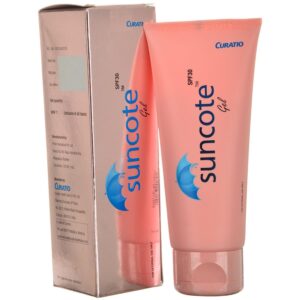VIT E + BENZOPHENONE-3 OCTYL METHOXYCINNAMATE
Vit E: Vitamin E, also known as alpha-tocopherol, is a fat-soluble vitamin that is essential for the proper functioning of our body. It is primarily used as a dietary supplement to fulfill the dietary requirements of vitamin E.
Vitamin E functions as an antioxidant, meaning it helps to protect cells from damage caused by free radicals. It works by neutralizing these free radicals and preventing them from causing oxidative stress, which can lead to various health problems, including heart disease and cancer.
The recommended daily intake of vitamin E varies depending on age, sex, and certain medical conditions. For most adults, the recommended dietary allowance (RDA) ranges from 15 to 20 milligrams (mg) per day. However, higher doses may be required for individuals with specific health conditions, under the guidance of a healthcare professional.
Although vitamin E is generally considered safe, excessive doses of vitamin E (more than 1,000 mg per day) may increase the risk of bleeding and can interact with certain medications, such as blood thinners or antiplatelet drugs. Common side effects of high-dose vitamin E include nausea, diarrhea, stomach cramps, fatigue, and blurred vision.
It is important to note that obtaining vitamin E from natural food sources is generally preferred over supplementation. Good dietary sources of vitamin E include nuts, seeds, vegetable oils, leafy green vegetables, and fortified cereals. It is advisable to consult with a healthcare professional before starting any new supplementation regimen, as they can provide customized advice based on individual needs and medical history.
Benzophenone-3 Octyl Methoxycinnamate: Benzophenone-3 Octyl Methoxycinnamate, also known as OMC or Ethylhexyl Methoxycinnamate, is an organic compound that is commonly found in sunscreen and cosmetic products. It is primarily used as a UV filter to protect the skin from harmful UVB rays.
Mechanism of Action:
Benzophenone-3 Octyl Methoxycinnamate works by absorbing UVB rays, preventing them from penetrating the skin. It forms a thin layer on the skin’s surface, reflecting or scattering the UVB rays to prevent them from causing damage. This mechanism helps reduce the risk of sunburn, skin aging, and skin cancer caused by UV radiation.
Use:
Benzophenone-3 Octyl Methoxycinnamate is primarily used as a sunscreen ingredient. It offers protection against UVB rays and is often combined with other sunscreen agents to provide broad-spectrum protection against UVA and UVB rays.
Dose:
The dosage of Benzophenone-3 Octyl Methoxycinnamate depends on the specific sunscreen or cosmetic product being used. It is generally applied topically as directed on the product label. It is important to follow the instructions provided by the manufacturer for optimal sun protection.
Side Effects:
While Benzophenone-3 Octyl Methoxycinnamate is generally considered safe, some individuals may experience adverse reactions or sensitivity to the compound. Common side effects may include skin irritation, allergic reactions, or contact dermatitis. If any persistent or severe side effects occur, it is recommended to discontinue use and consult a healthcare professional.
It is worth noting that Benzophenone-3 Octyl Methoxycinnamate has come under scrutiny due to its potential to act as an endocrine disruptor. Although further research is needed, some studies suggest that it may interfere with hormonal balance. However, the concentration used in cosmetic products is typically low, and the risk is considered minimal.
As with any sunscreen or cosmetic product, it is advisable to perform a patch test before applying Benzophenone-3 Octyl Methoxycinnamate or any other product containing it, especially if you have sensitive skin or a history of allergic reactions. If in doubt, consult a healthcare professional or a dermatologist for personalized advice.

